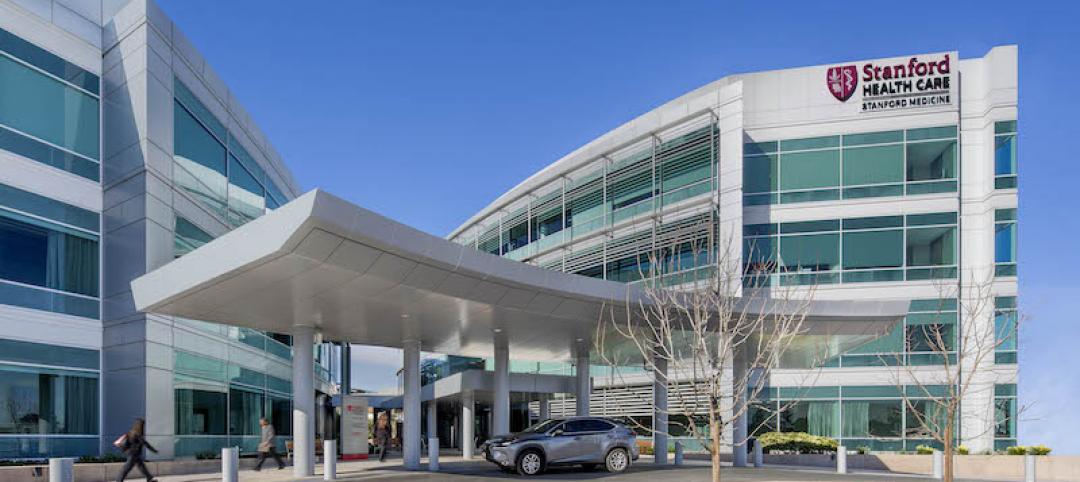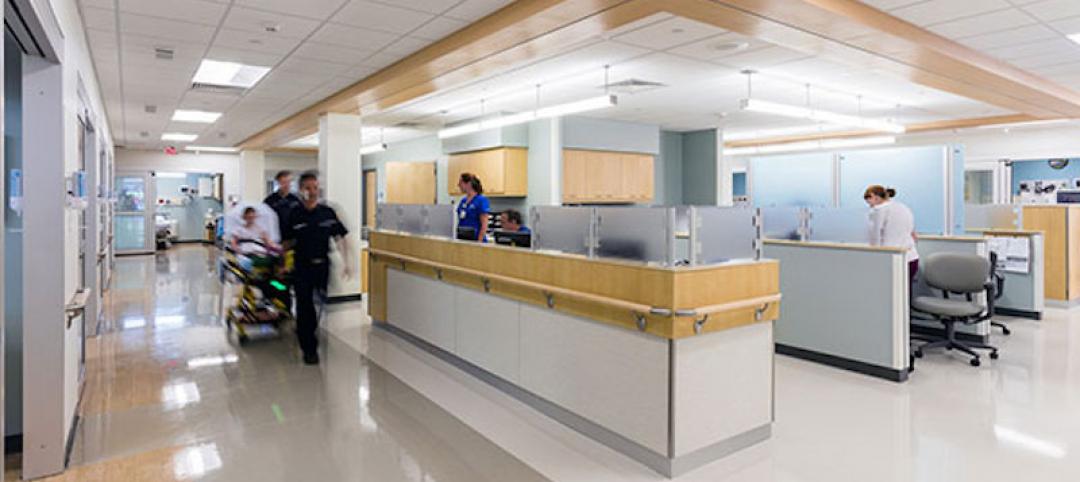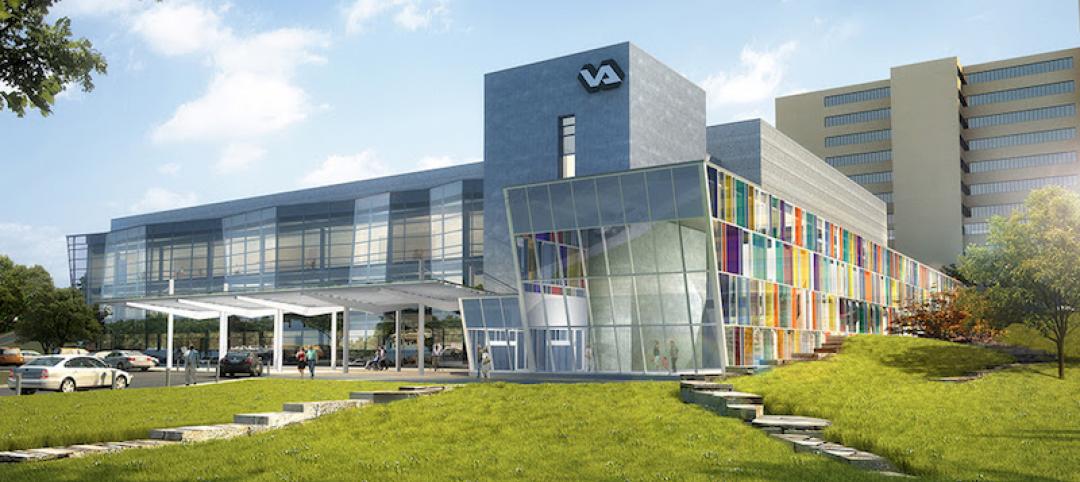Buildings offering wellness services are proliferating on college campuses.
Among the schools with student centers that include “wellness” in their titles and programming are Franklin & Marshall College, the University of Chicago, Cal State Fullerton, Texas Tech, Stevens Institute of Technology, College of the Holy Cross, New York University, the University of Utah, Duke University, and Rutgers University.
Wellness “is redefining the typology,” says Scott Baltimore, an architect with Duda|Paine Architects in Durham, N.C., which has carved out a specialty in wellness design. He elaborates that more schools are taking a “synergistic” approach that brings different services and academic departments under one roof, thereby making the building more of a destination.
This transformation has also been “institutional,” says Turan Duda, FAIA, the firm’s Founding Principal. Parents want to know where their kids can go if their educational journey suffers a medical or psychological setback, particularly in the area of depression. More to the point, says Duda, are the “preventive” services that wellness suggests, a “safe place” where students can turn to for help and interaction.
AN EVOLVING FIELD
That colleges and universities are using wellness centers as part of their marketing and recruiting isn’t surprising. But what constitutes “wellness” depends on the school, and can be intentionally ambiguous, says Duda, because “this field is evolving.” To cite one unusual example, Duke University attracted more male students to its wellness center only after it introduced a “drumming circle” to its programming.
One of Duda|Paine’s projects is the recently completed University of Virginia Student Health & Wellness Center in Charlottesville, which the firm designed in collaboration with WMDO Architects, a frequent partner with the university. The project’s construction manager was Barton Malow, and the building pursued the International WELL Building Institute’s WELL Building Standard certification.
This 169,000-sf building, which replaces the school’s Elson Student Health Center, emphasizes wellness and preventive healthcare. It integrates student life and healthcare by introducing students to critical aspects of social, physical, psychological, personal, and environmental wellness. The project also brings together all the major campus health departments—General Medicine, Gynecology, Counseling and Psychological Services, Office of Health Promotion, and the Student Disability Access Center—as well as the Kinesiology Department and student wellness spaces.
During the building’s design phase, WMDO conducted workshops that included a virtual-reality simulation of the center’s entrance to assess different scenarios of student well-being. Another workshop focused on “journey mapping.”
The resulting four-story building is organized around an open and light-filled entry and multi-story lobby, with generous daylighting into all departments, and improved orientation and wayfinding. On the ground floor, level with the exterior ground plane to optimize visibility and accessibility, the Office of Health Promotion presents the “first stop” for students, while the Student Disability Access Center is convenient and central, overlooking the south pond.
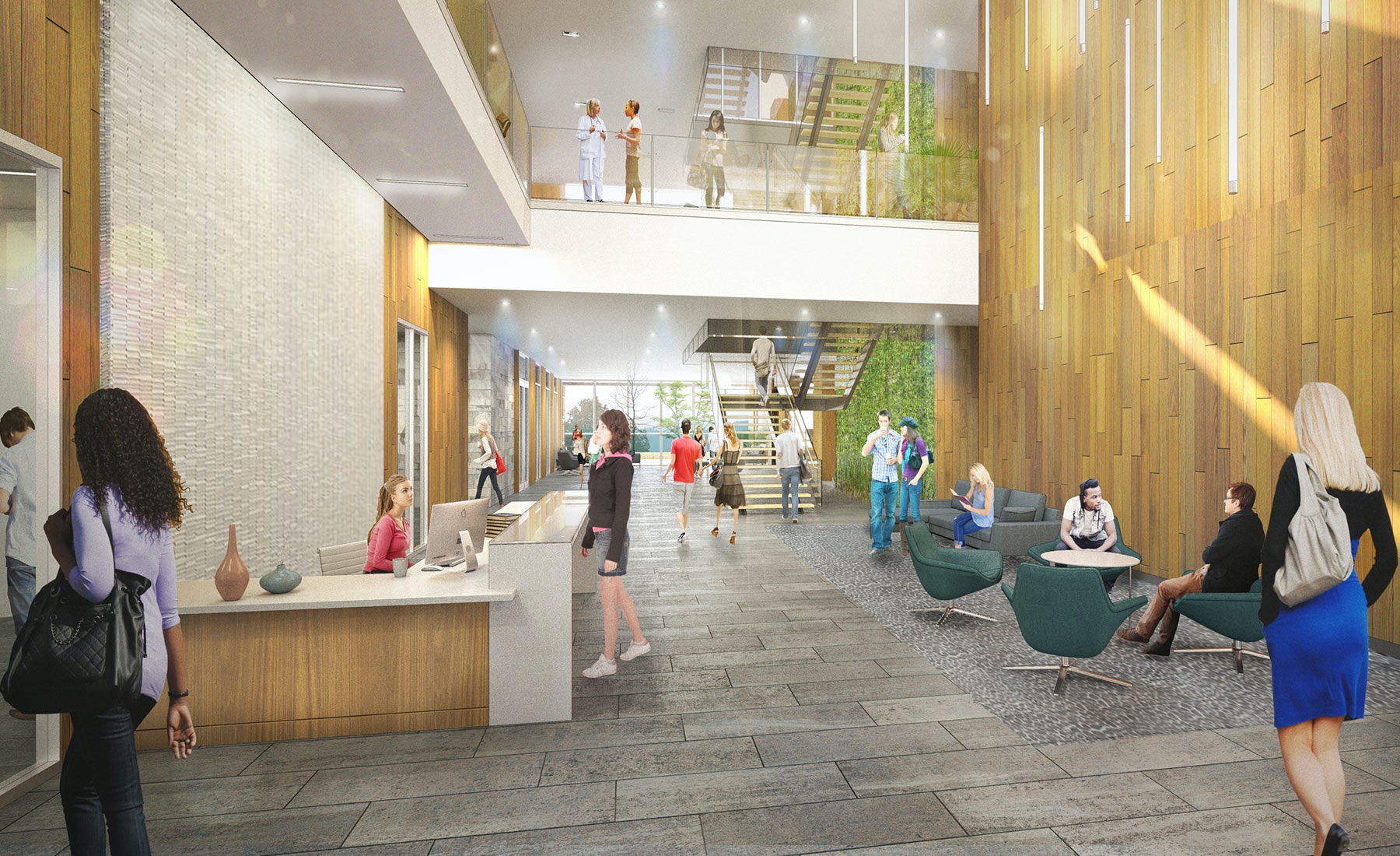
PART OF A LARGER MASTER PLAN
Spaces on the ground level create opportunities for program synergies and community outreach. These include a pharmacy and retail space, and a teaching kitchen that provides classes on healthy eating habits and nutrition. (Duda sees this kitchen as another of the center’s “preventive” services. “Wellness centers are giving special attention to experiences,” says Duda, from the parking lot to the “choices” in services the center makes available to students.)
An Education/Multi-Purpose space adjacent to the main lobby supports functions such as yoga, special events, staff meetings, and wellness education. These spaces facilitate interaction and the exploration of alternative methodologies in wellness education.
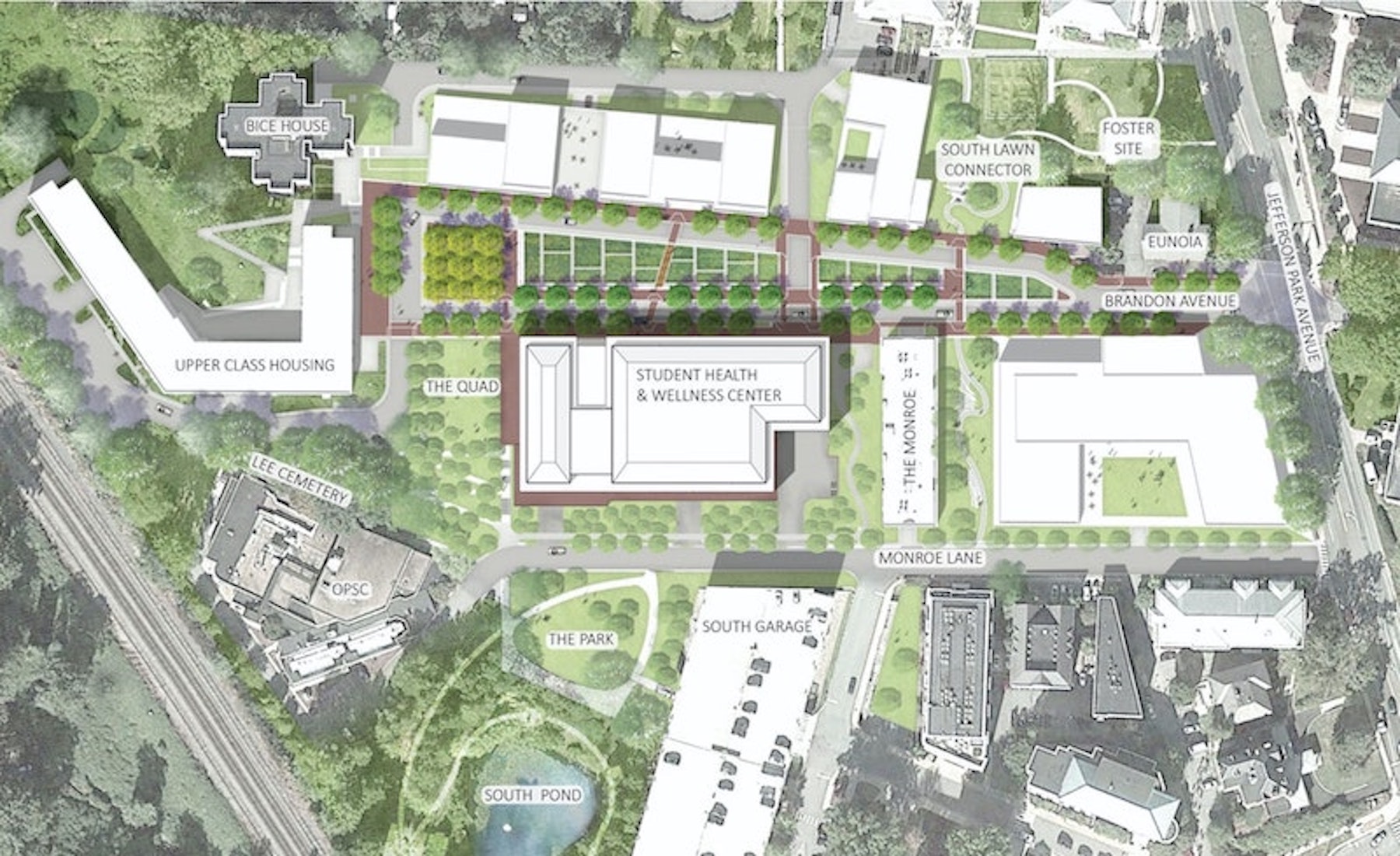
The University of Virginia’s Student Health & Wellness Center is located close to the school’s historic quad. The building is also the first development within the Perkins and Will-designed Brandon Avenue Precinct Master Plan that eventually will include housing and other mixed-use buildings along a “green street,” and weave the university’s Central Grounds and the Health System Campus.
Related Stories
BIM and Information Technology | Jul 9, 2018
Healthcare and the reality of artificial intelligence
Regardless of improved accuracy gains, caregivers may struggle with the idea of a computer logic qualifying decisions that have for decades relied heavily on instinct and medical intuition.
Healthcare Facilities | Jun 28, 2018
New Stanford Healthcare outpatient building opens in Redwood City
The facility recently celebrated its grand opening with a ribbon-cutting ceremony.
Healthcare Facilities | Jun 26, 2018
The future of the ambulatory surgery centers and acuity levels
Offering the one-two punch of cost savings and convenience, ASCs are increasingly becoming the venue of choice for both physicians and patients.
Healthcare Facilities | Jun 26, 2018
Mesquite, Texas to receive 60-acre ‘wellness village’
Construction is anticipated to begin on the initial phase in mid-2019.
University Buildings | Jun 25, 2018
Virginia Commonwealth has at least three major expansion projects under construction
New buildings for outpatient care, engineering, and rehabilitation of serious injuries and debilities are scheduled to be completed in 2020.
Healthcare Facilities | Jun 6, 2018
French 'Alzheimer’s Village' designed to resemble a medieval bastide
The new facility will provide research on a new way of treating Alzheimer’s patients.
Healthcare Facilities | May 29, 2018
Will telemedicine change the face of healthcare architecture?
Telemedicine is a broad term that covers many aspects and mediums of care, but primarily it refers to the use of video monitors to allow a virtual face to face consultation to take place.
| May 24, 2018
Accelerate Live! talk: Security and the built environment: Insights from an embassy designer
In this 15-minute talk at BD+C’s Accelerate Live! conference (May 10, 2018, Chicago), embassy designer Tom Jacobs explores ways that provide the needed protection while keeping intact the representational and inspirational qualities of a design.
Healthcare Facilities | May 24, 2018
The design of the new Omaha VA Ambulatory Care Center incorporates veteran symbolism throughout the building
Leo A Daly designed the facility.
Building Team Awards | May 17, 2018
Patient priorities: Cleveland Clinic Taussig Cancer Center
Gold Award: Cleveland Clinic’s new cancer center is a transparent, collaborative hub for improved patient experiences and enhanced communication with caregivers.




